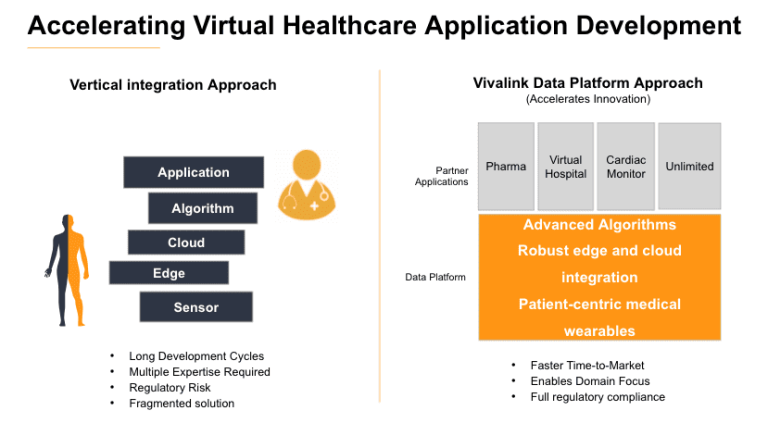
 The following is a guest post Aaron Timm, EVP and Chief Commercial Officer Vivalink
The following is a guest post Aaron Timm, EVP and Chief Commercial Officer Vivalink
In recent years, Health at Home (HaH) programs have gained widespread acceptance as a way for patients to receive acute care in their own homes. These programs have gained traction around the world as they offer a solution to challenges found in traditional hospitals, including capacity constraints, increasing expenses, and efforts to improve patient experience and outcomes.
While the concept of providing acute care services in the home is not entirely new, recent advances in medical technology, evolving healthcare policies, and changing patient preferences are combining to drive the expansion of HaH solutions.
Home health technologies such as remote patient monitoring (RPM) and telemedicine have significantly improved access to care and helped support HaH programs. However, along with technological advancements, government support, the shift to value-based care, and effective coordination among health care teams play an equally important role in the widespread adoption of HaH initiatives.
Enhance your hospital-at-home solution with remote monitoring
Remote monitoring serves as a fundamental component of hospital-at-home solutions that require access to real-time patient data to inform clinical decision-making. These programs leverage a range of RPM tools, including wearable devices such as blood pressure monitors, pulse oximeters and biosensors, tailored to individual patient requirements.
Conducted by VivaLink investigation Hundreds of clinicians participated to evaluate the use of RPM devices outside of traditional hospital settings. Survey results showed that over 80% of healthcare providers are currently using RPM technology to track patients’ vital signs and monitor recovery progress outside of the hospital, with 45% of providers using RPM for acute monitoring, such as in HaH programs.
In recent years, we have seen a noticeable shift towards prioritizing patient-centered care. Patients often prefer to receive care in the familiar and comfortable environment of their own home, where they feel more relaxed and in control. As RPM technology advances and gains wider acceptance, we expect to see more healthcare facilities and providers adopting hospital-at-home solutions as a viable alternative to traditional hospital care.
Government support and reimbursement policies for home solutions
The continued growth of HaH programs requires government support and reimbursement policies that provide incentives for investment in the infrastructure, personnel, and technology required to deliver hospital-level care in the home while ensuring patients have adequate access to quality health care services.
Australia and some European countries Decades of hospital care at homeThe adoption of hospital care in the home has been relatively slow in the United States, but the Centers for Medicare and Medicaid Services (CMS) has taken important steps to accelerate the adoption of home-based care models. Home Acute Hospital Care (AHCAH) Waiver In 2020.
The waiver allows participating facilities to be reimbursed for providing acute care in the home and promotes greater awareness and implementation of HaH programs across the country. A major expansion of home care programsAs of March 2023, 277 hospitals in 37 states have been approved to provide care under the waiver. Extended until December 31, 2024.
The growing adoption of home hospital services indicates that the model is likely here to stay, and this is a consensus among clinicians: According to Vivalink survey results, 77% of providers expect RPM-based care to surpass traditional inpatient hospital care in adoption and preference within the next five years.
The impact of value-based models
The shift towards value-based care models in healthcare is changing the way patient-centered care is delivered, further driving the adoption of HaH. Unlike the traditional fee-for-service model, where providers are paid based on the number of services they deliver, value-based care focuses on quality of care, provider performance, and patient experience.
In the United States, where the healthcare system has traditionally operated under a fee-for-service framework, there has been growing interest in exploring and implementing value-based healthcare models. For example, CMS is piloting the following value-based payment systems: Episode-based paymentsis intended to encourage health care providers to provide comprehensive and coordinated care for specific medical conditions.
The shift to value-based care is consistent with the mission of HaH Care, and hospital systems have long studied its effectiveness. For example, in the early 2000s, Johns Hopkins Medicine researchers We investigated the feasibility of providing hospital-level care in the home for older adults with serious illnesses.
Findings showed that the model met quality standards comparable to acute inpatient care and led to shorter hospital stays and lower costs. Specifically, patients treated at home had an average length of stay of 3.2 days compared to 4.9 days for inpatients. Additionally, the average cost of HaH care was approximately $5,081 compared to $7,480 for acute inpatient care.
Recent studies, e.g. Massachusetts General Brigham’s Study One of the AHCAH findings, hospital-at-home care, mirrors similar findings. Health system studies suggest that hospital-at-home care is important for managing acute illnesses, especially for vulnerable and medically complex patients. Findings also reveal lower mortality rates and a reduced need for intensive hospital care compared to traditional hospital settings.
Advanced technologies expand access to home care
As technological advancements accelerate, home care adoption is expected to grow further. Challenges in traditional hospitals and a focus on improving patient experience and outcomes are driving increased adoption of HaH solutions around the world, highlighting the importance of advanced technology to make acute care more accessible at home.
Research from trusted institutions has demonstrated the effectiveness of HaH care. As technology, especially acute RPM, continues to advance, so will the adoption and effectiveness of home care. The connection between technology and care delivery will reshape patient care, ultimately improving patient outcomes and experiences across the care continuum.
Get the latest healthcare and IT news every day
Join thousands of others in the Healthcare and HealthIT industry who subscribe to our daily newsletter.
We respect your privacy and will not sell or publish your contact information.

